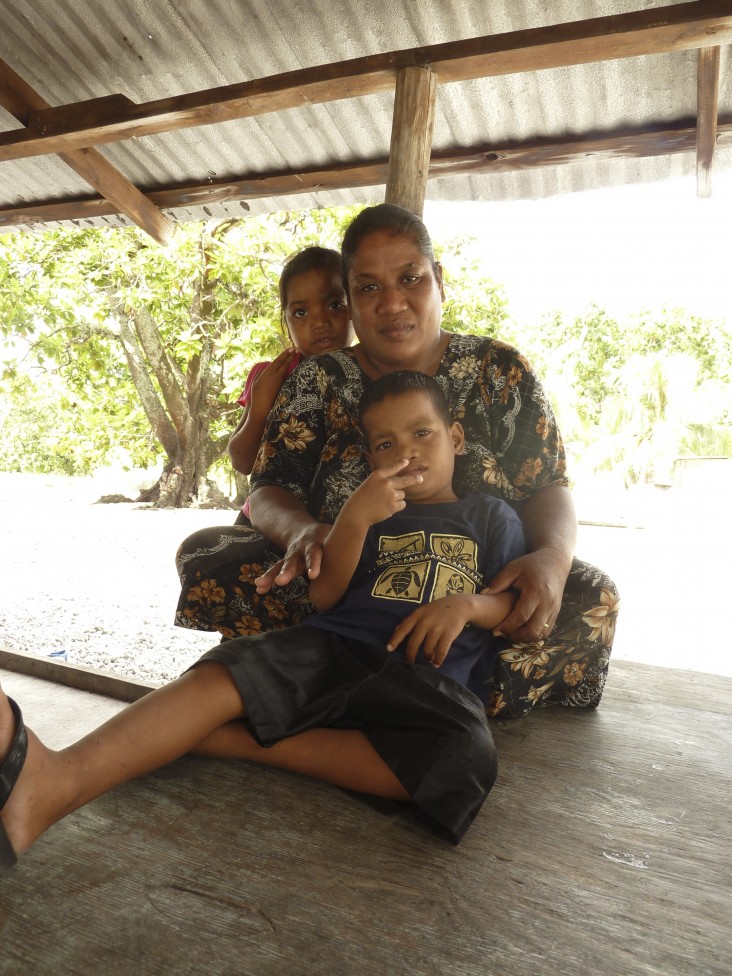
Jan. 2015—Julian Bejang, 40, knows all about living through droughts.
She is from Lib Island in the Republic of the Marshall Islands, which receives on average 20 inches of rain annually. A mother of two young children, she learned to wait out lean times when water was hard to come by and how to cope until the water returned. But one year after the last drought began, the water didn’t return.
The drought began in late 2012 and continued into 2013. Water storage facilities ran dry and crops were devastated. The country’s main food supplies—fish and breadfruit (a starchy staple Pacific Island food)—became scarce. With no water, the breadfruit couldn’t grow and fishermen couldn’t travel by sea under the hot sun to catch fish.
“We had to eat unripe breadfruit that fell from the trees,” remembers Bejang. “and even that was limited.”
Moreann Jajo, 13, another Lib Island resident, said, “We got some water from coconuts, but there wasn’t enough for all of us on the island.”
Water catchments that normally held drinking water nearly dried out. “We tried boiling the water, but we still couldn’t drink it. It was that dirty,” said Bejang.
The country was in a crisis.
The United States Government issued a Presidential Disaster Declaration and released more than $5.5 million in federal funding for urgent relief needs. USAID’s Office of U.S. Foreign Disaster Assistance led the interagency effort, assisting the nation for nine months until March 2014. Throughout this period, the Government of the Marshall Islands coordinated with civil society to distribute the donated goods. They helped install 20 solar-powered reverse osmosis portable units, which can produce up to 360 gallons of drinking water per day. They also helped deliver 1.47 million pounds of food to people in 13 atolls.
The goods reached 5,300 people. In times of drought, water-related diseases can spread and endanger lives, but the people were kept healthy with a supply of medicine, hygiene supplies and sanitation kits. In the end, no lives were lost, and because of the direct involvement of community members and leaders, the Republic of the Marshall Islands strengthened its ability to coordinate, monitor, report and lead in times of disaster.
Residents like Bejang and Moreann have moved on with their lives. “Now we have enough water to drink and it’s clean ... not salty,” says Moreann. More importantly, their communities are better equipped to survive the next drought.
By effectively responding to and mitigating natural disasters around the world, USAID ensures that the most vulnerable populations are protected and that they can contribute to their community and advance stability and prosperity for their nation.
LINKS







Comment
Make a general inquiry or suggest an improvement.